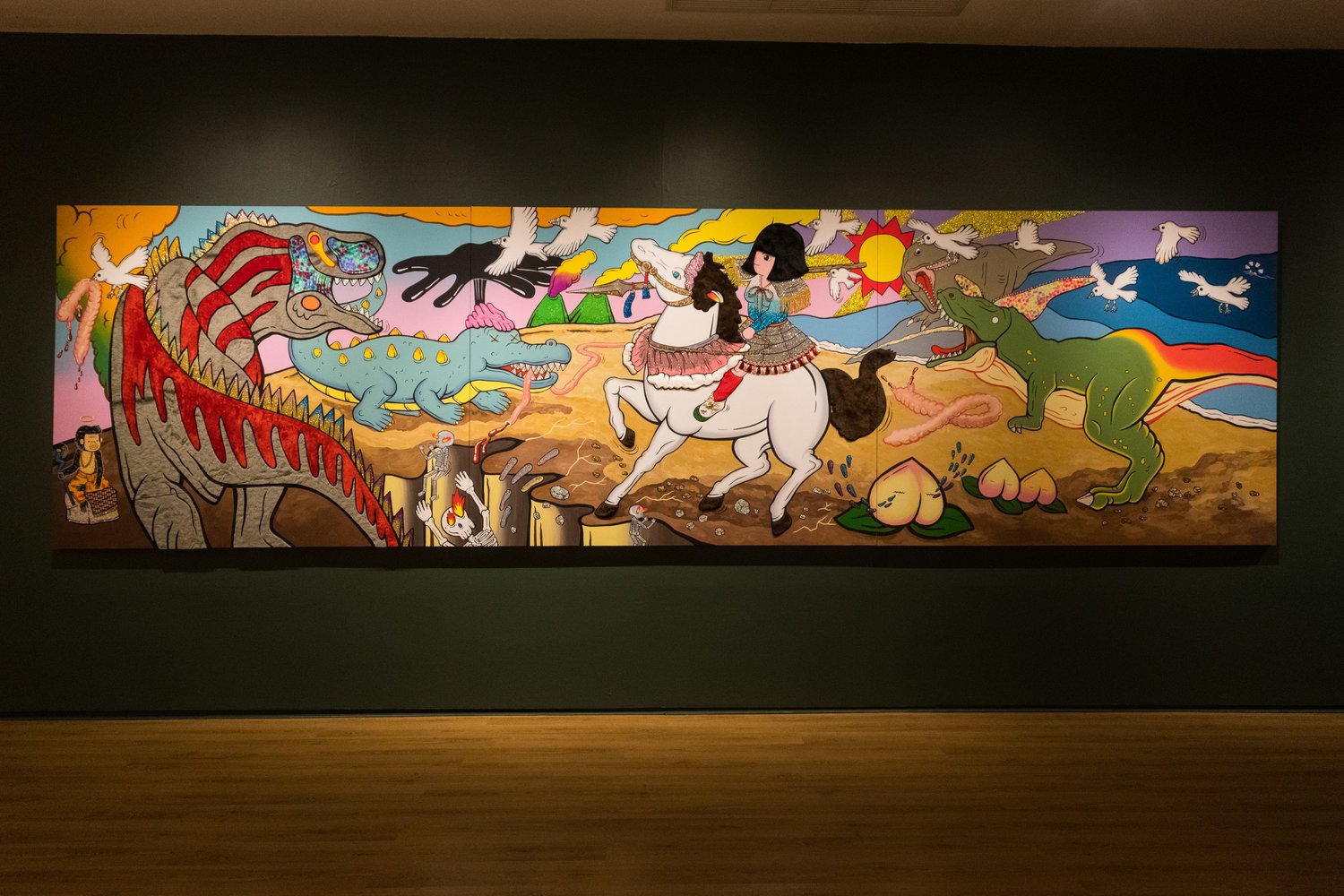July Round-Up
FX Harsono, Akkara Naktamna, Gilles Massot and other Southeast Asian artists showcase their works across various locations
By Dewi Woo
FX Harsono, ‘Gazing on collective memory’, 2016, wood, found objects, books, ceramic bowls, wooden butter mould, wooden cookie mould, metal spoons, 3D digital prints, framed photographs and electric candle lights. Image courtesy of National Gallery of Australia.
Contemporary Worlds: Indonesia
This group exhibition features 20 Indonesian artists such as FX Harsono, Melati Suryodarmo, Tromarama and Octora, just to name a few. It shows Indonesia’s history of art, especially how political and social affairs have shaped artistic practices in the post-Reformasi period. Visitors can expect to see the Australian debut of Melati Suryodarmo’s performance, ‘Transaction of Hollows’, and a series of paintings by Zico Albaiquni made specially for the show. Another highlight is ‘Silent Operation’, a neon artwork exploring the contemporary art market by Uji (Hahan) Handoko Eko Saputro created in collaboration with Adi ‘Uma Gumma’ Kusuma.
National Gallery of Australia, 21 June to 27 October.
Gilles Massot, ‘Time Frame’, 1977, mixed media on paper, 50 x 65cm. Image courtesy of NUS Museum and the artist.
Gilles Massot: …you have to lose your way to find yourself in the right place
Singapore-based French artist Gilles Massot presents a series of photographs, videos, writings and sketches detailing his journey and questions on self-identity from his arrival in Singapore in the early 1980s to the present. Through his art, Massot explores issues of identity and one’s sense of self, sharing his thoughts on his place in society as an expatriate. Massot has also re-enacted scenes and photographs taken by Jules Alphonse Eugène Itier, who took some of the earliest daguerreotypes of Singapore. This is not only to show contrasts, but also to assert a form of affinity with each another through their similar journeys and experiences. According to Massot, they are “too many and coherent to be merely accidental”.
NUS (National University of Singapore) Museum, 14 June to 31 December.
An image from one of Akkara Naktamna’s ‘GHOSTS’ series. Image courtesy of Kathmandu Photo Gallery.
Akkara Naktamna: Demonic
Equipped with his camera and a sense of humour, Thai artist Akkara Naktamna explores the supernatural, spirituality, and religion, which anchor Thai culture. In recent years, scandals such as the Thai temple fund fraud in 2017 caused their importance to dwindle slightly. It also caused many to look differently at the saffron robe worn by Theravada Buddhist monks. Once a symbol of spiritual liberation and a representation of Buddhism, the saffron robe is now perceived as an ordinary garment anybody, even non-believers, can wear. Akkara uses objects like dolls to symbolise innocence. They accompany black figures draped with bright orange robes, which illustrate his thoughts on how the greed and selfishness of man has tainted the purity of the religion.
Kathmandu Photo Gallery, 6 July to 31 August.
Aiya Balingit, ‘Rescue the Sleepless Sleep’, 2019, oil on canvas, 152.5 x 122cm. Image courtesy of BenCab Museum.
Northbound
Curated by Ruel Caasi, The Working Animals art collective presents ‘Northbound’, a group exhibition held at the BenCab Museum in the Philippines. It features works by young Filipino artists such as Aiya Balingit, Yeo Kaa, Lawrence Canto, and Jett Osian. They have adopted contemporary approaches to traditional art forms like painting and sculpture to spark conversation about the creative processes of artists in landlocked Benguet. From the narrative to the symbolic, and the literary to the satirical, the artworks carry references to pop culture and current events. They also discuss how technology and social media have impacted the art world today.
BenCab Museum, 15 June to 4 August.
Yuree Kensaku, ‘The Lady on a White Horse’, 2019, acrylic, glitter, silver leaf and collage on linen, 150 x 540 cm. Image courtesy of Tang Contemporary Art, Bangkok.
Yuree Kensaku: The Lady on a White Horse
It is said that the people of Thailand believe in a prophecy where the kingdom will one day be saved by a lady riding a white horse. In this exhibition curated by Loredana Pazzini-Paracciani, Thai-Japanese artist Yuree Kensaku illustrates how folklore and legends have affected people’s thoughts and behaviour, to the point of distorting the lines between fantasy and reality. Kensaku is well-known for her bright-colored, manga-styled artworks that have a childlike quality to them, but a deeper look reveals that beneath the innocence lies darker themes of troubling matters in society today, as well as her own stories of loss and suffering. The highlight of this exhibition is its titular work, ‘The Lady on a White Horse’, a five-metre long canvas depicting the prophecy and encouraging viewers to ponder the social and political impact it has on present-day Thailand.
Tang Contemporary Art, 24 June to 24 July.


















